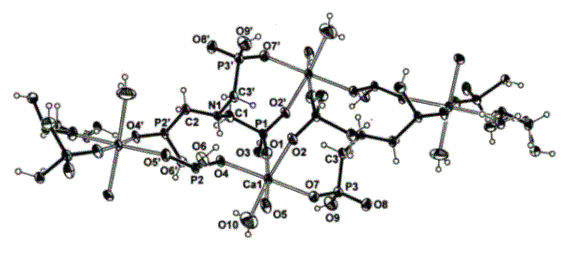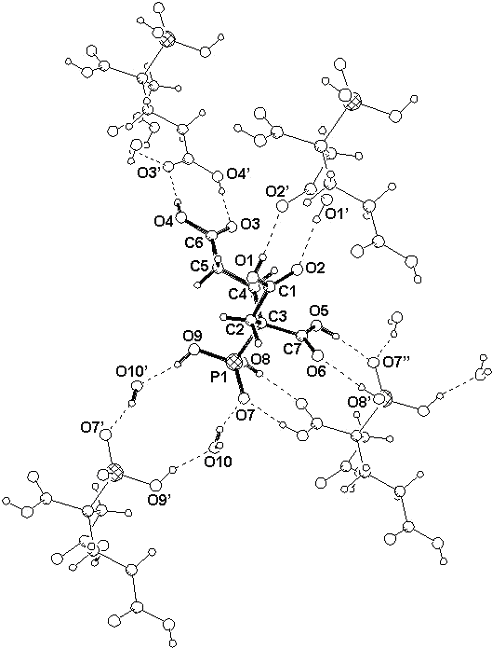

Metal-Phosphonate chemistry
Crystal engineering is a relatively new field of chemical research concerned with controlling or predicting the type of structures that can be formed from a given ligand. Such an approach is used to generate new materials with specific physical properties, but it can also result in a better understanding of solid-state topochemically governed reactions. Phosphonates are excellent candidates for building blocks for supramolecular structures. They have been shown to form extremely strong hydrogen bonds as the basis of their solid-state structures. There is also intense interest in their properties for the formation of layered and linear supramolecular arrays.
Our interest in this area is driven by the synthesis of new materials, but also by their potential applications. Solids that possess controlled voids can be used for "storage" purposes, ion exchange materials and for separation of nuclear heavy metal wastes. We recently synthesized and structurally characterized a solid material containing Ca2+ and AMP (amino-tris-methylene-phosphonate). A study to examine the hydrogen bonding interactions in the solid state structure of 2-Phosphonobutane-1,2,4-Tricarboxylic Acid (PBTC) was undertaken. Our goal is to extend our synthetic approach to multifunctional phosphonates, mixed phosphonates/carboxylates, dendrimers containing phosphonate groups, by using cations such as alkali metals, or redox-active centers.
 |
Figure 4. Portion of the polymeric Ca-AMP structure. |
 |
Figure 5. Portion of the structure of 2-Phosphonobutane-1,2,4-Tricarboxylic Acid (PBTC). |